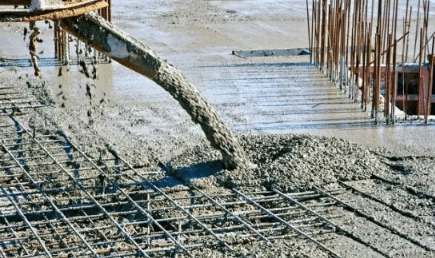What Are Common Concrete Variants Used For Construction In National City?

Asphalt Concrete
Asphalt concrete is a mix of asphalt and aggregate, usually in proportions of 95% asphalt to 5% aggregate. It is commonly used for paving roads and driveways, as well as other applications where a strong, durable surface is required.
Blast-Furnace Slag Cement
Blast-furnace slag cement is made from a by-product of the iron-making industry. It contains a high percentage of calcium oxide and other compounds that make it resistant to freezing and thawing. It is commonly used as a concrete admixture to improve workability and increase strength.
Calcium Aluminate Cement
Calcium aluminate cement is made from calcium oxide and aluminium oxide. It sets quickly and is commonly used in the production of quick-setting concrete products such as precast concrete, shotcrete and refractory bricks.
Cement Kiln Dust
Cement kiln dust (CKD) is a by-product of the cement manufacturing process. It contains high levels of calcium oxide and other compounds that make it useful as a partial replacement for Portland cement in concrete mixtures.
Coloured Concrete
Coloured concrete is made by adding pigment to the concrete mix. It can be used to create a variety of effects, from a natural stone look to a bright, colourful surface.
Engineered Cementitious Composite
Engineered cementitious composite (ECC) is a type of concrete that contains fibres and other additives that improve its strength and flexibility. It is commonly used in the construction of bridges and buildings where high levels of seismic activity are expected.
Fibre-Reinforced Concrete
Fibre-reinforced concrete (FRC) is made by adding synthetic or natural fibres to the concrete mix. The fibres help to improve the concrete’s strength and resistance to cracking.
Fly Ash Concrete
Fly ash is a by-product of coal-fired power plants. It can be used as a partial replacement for Portland cement in concrete, and helps to improve the concrete’s workability, strength and durability.
Geopolymer Concrete
Geopolymer concrete is made from a variety of industrial wastes, such as fly ash, slag and silica fume. It is a sustainable alternative to Portland cement concrete, with improved mechanical and durability properties.
Lightweight Concrete
Lightweight concrete is made by using lightweight aggregates such as expanded clay or shale. It has a lower density than normal weight concrete, making it suitable for use in structural applications where weight is a concern.
Shotcrete
Shotcrete is concrete that is pneumatically sprayed onto a surface. It is commonly used in the construction of tunnels, mines and other underground structures.
Self-Consolidating Concrete
Self-consolidating concrete (SCC) is a type of concrete that can flow and compact under its own weight. It is often used in the construction of bridges and buildings where traditional vibrating methods are not feasible.
Ultralightweight Concrete
Ultralightweight concrete is made from lightweight aggregates such as pumice or vermiculite. It is typically used in applications where weight is a major concern, such as in the construction of aircraft hangars or offshore structures.
Conclusion
Concrete is a versatile construction material that has many different applications. The type of concrete used in a project will depend on the required strength, workability and durability of the finished product. For more information, contact Concrete Contractor National City at (619) 678-0060.